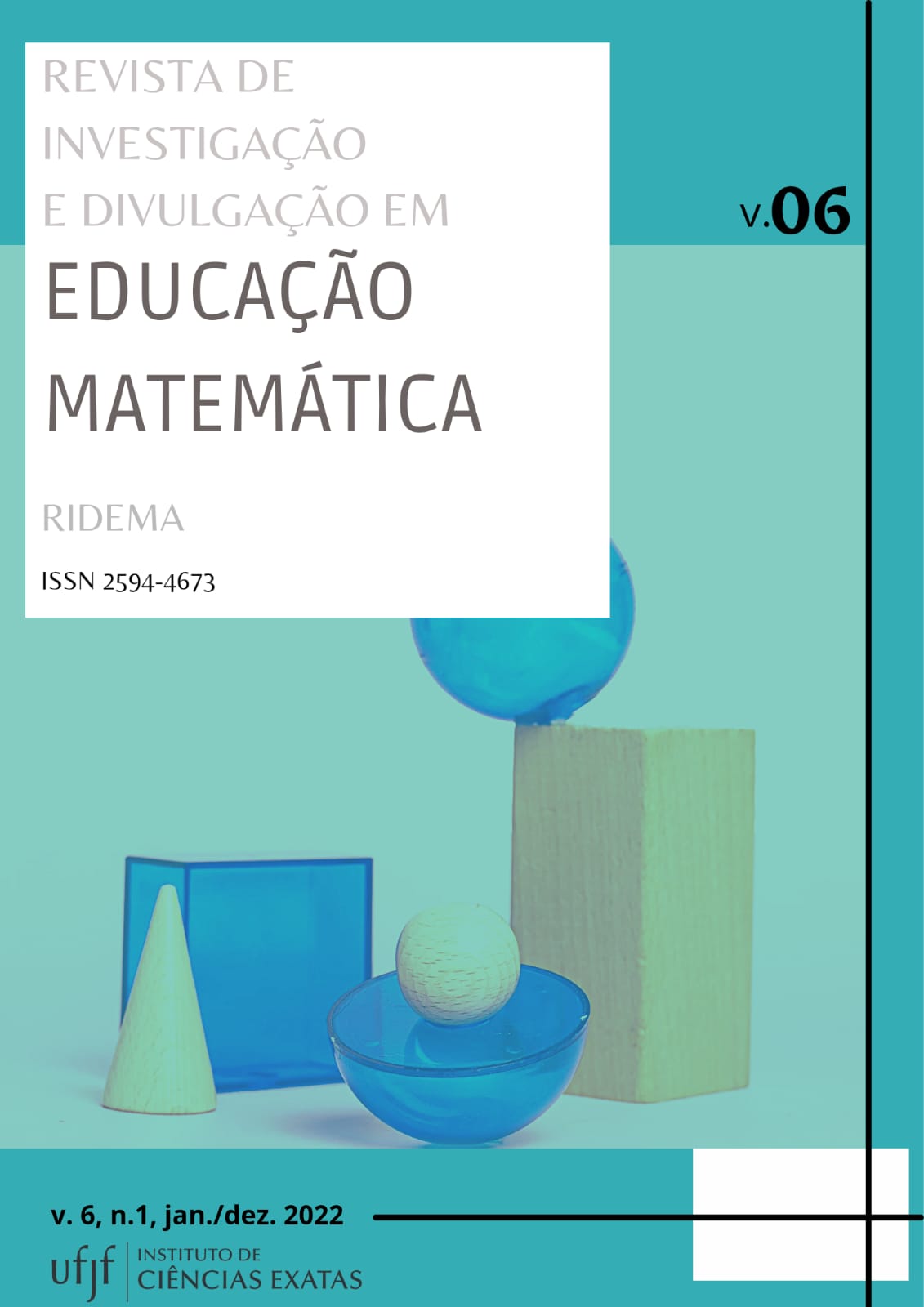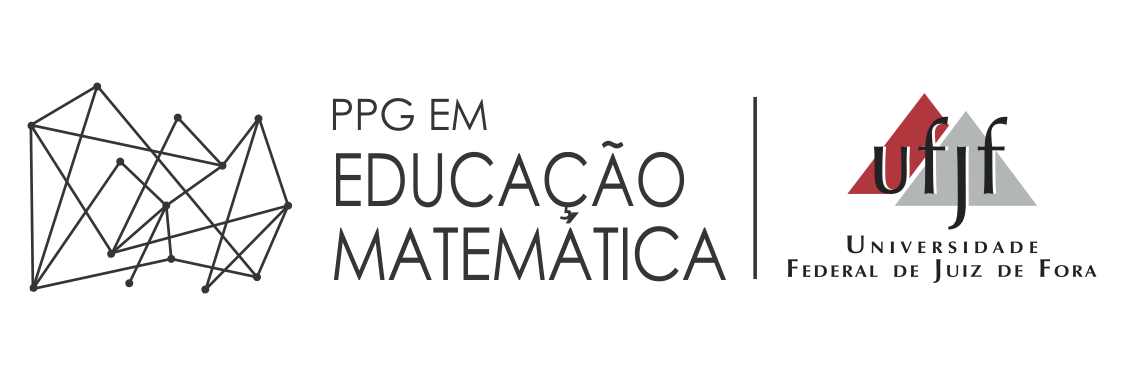Performance of Early School Years’ Prospective Teachers on a Task Involving non-Proportional Relationships
DOI:
https://doi.org/10.34019/2594-4673.2022.v6.37941Keywords:
Performance; Non-proportional relationships; Prospective teachers; Early school yearsAbstract
In this article is studied the performance of prospective teachers of the first school years in a task involving non-proportional relationships. It is also intended to compare the performance attained in this study with the performance of the same students in previous studies involving proportionality tasks. The study included 72 students from the 1st year of the Degree in Basic Education at a university in the north of Portugal. Data were obtained through the application of a questionnaire involving ratios, proportions, proportionality, and non-proportionality. Here, in this study, a task involving non-proportional relationships is explored. From the results obtained, it is highlighted a variable performance of the students in the items of the task, proving more difficult those that involve more than one arithmetic operation, and the prevalence of strategies based on arithmetic operations. Compared with the tasks involving proportionality relations, in the present task, involving non-proportional relations, students had a worse performance and few of them adopted the simple three rule strategy and adhered to the "illusion of linearity".
Downloads
Metrics
References
AUSUBEL, D.; NOVAK, J.; HANESIAN, H. Psicologia educacional. Rio de Janeiro: Interamericana, 1980.
DE BOCK, D.; DOOREN, W. V.; VERSCHAFFEL, L.; JANSSENS, D. Improper use of linear reasoning: An in-depth study of the nature and the irresistibility of secondary school students’ errors. Educational Studies in Mathematics, Dordrecht, v. 50, p. 311-314, 2002.
DE BOCK, D.; VERSCHAFFEL, L.; JANSSENS, D. The predominance of the linear model in secondary school students' solutions of word problems involving length and area of similar plane figures. Educational Studies in Mathematics, Dordrecht, v. 35, p. 65-85, 1998.
DOOREN, W. V. The linear imperative: A search for the roots and an evaluation of the impact of the overuse of linearity. Tese (Doutoramento), Universidade de Leuven, Leuven, 2005.
DOOREN, W. V.; DE BOCK, D.; HESSELS, A.; JANSSENS, D.; VERSCHAFFEL, L. Remedying secondary school students’ illusion of linearity: a teaching experiment aiming at conceptual change. Learning and Instruction, Oxford, v. 14, p. 485-501, 2004.
DOOREN, W. V.; DE BOCK, D.; HESSELS, A.; JANSSENS, D.; VERSCHAFFEL, L. Not everything is proportional: Effects of age and problem type on propensities for overgeneralization. Cognition and Instruction, Abingdon v. 23, n. 1, p. 57-86, 2005.
DOOREN, W. V.; DE BOCK, D.; JANSSENS, D.; VERSCHAFFEL, L. The linear imperative: An inventory and conceptual analysis of students’ overuse of linearity. Journal for Research in Mathematics Education, Reston, v. 39, p. 311-342, 2008.
DOOREN, W.; DE BOCK, D.; WEYERS, D.; VERSCHAFFEL, L. The predictive power of intuitive rules: A critical analysis of the impact of 'more a-more b' and 'same a-same b'. Educational Studies in Mathematics, Dordrecht, v. 56, n. 3, p. 179-207, 2004.
FERNANDES, J. A. Aplicação da proporcionalidade direta à resolução de uma situação do quotidiano por futuros professores dos primeiros anos. Educação Matemática Pesquisa, São Paulo, v. 23, n. 2, p. 76-98, 2021.
FERNANDES, J. A. Desempenho de futuros professores numa tarefa de proporcionalidade envolvendo quantidades de uma grandeza. Perspectivas da Educação Matemática, Campo Grande, v. 15, n. 37, p. 1-20, 2022.
FERNANDES, J. A. Intuições e aprendizagem de probabilidades: uma proposta de ensino de probabilidades no 9º ano de escolaridade. Tese (Doutoramento em Educação – Metodologia do Ensino da Matemática), Universidade do Minho, Braga, 2000.
FREUDENTHAL, H. Didactical Phenomenology of Mathematical Structures. Dordrecht: Reidel, 1983.
GALL, M. D.; GALL, J. P.; BORG, W. R. Educational research: An introduction. 7. ed. Boston: A & B Publications, 2003.
LAMON, S. J. Rational numbers and proportional reasoning: Toward a theoretical framework for research. In: Lester, F. K. (Ed.). Second handbook of research on mathematics teaching and learning. Charlotte: Information Age Publishing, 2007. p. 629-667.
MARTINS, I. A.; FERNANDES, J. A. A prevalência da linearidade nas relações entre os conceitos de perímetro, área e volume. In: LIBRO DE ACTAS DO XI CONGRESO INTERNACIONAL GALEGO-PORTUGUÉS DE PSICOPEDAGOXÍA. A Coruña, 2011. Proceedings… A Coruña: Revista Galego-Portuguesa de Psicopedagoxía, 2011. p. 1299-1310.
MARTINS, I. A.; FERNANDES, J. A. Estratégias usadas por alunos do ensino básico em tarefas envolvendo relações entre os conceitos de perímetro, área e volume. In: Gomes, A. (Ed.). ELEMENTARY MATHEMATICS EDUCATION. Braga, 2008. Proceedings… Universidade do Minho e Associação para a Educação Matemática Elementar, 2009. p. 303-312.
MINISTÉRIO DA EDUCAÇÃO E CIÊNCIA. Programa de matemática para o ensino básico. Lisboa: Autor, 2013.
MODESTOU, M.; GAGATSIS, A. Students’ improper proportional reasoning: A result of the epistemological obstacle of “linearity”. Educational Psychology, v. 27, n. 1, p.75-92, 2007.
MODESTOU, M.; GAGATSIS, A.; PITTA-PANTAZI, D. Students’ improper proportional reasoning: the case of area and volume of rectangular figures. In: Hoines, M. J.; Fuglestad, A. B. (Eds.). Conference of the International Group for the Psychology of Mathematics Education, 3, Bergen, 2004. Proceedings… Bergen, 2004. p. 345-352.
NCTM. Normas para o Currículo e a Avaliação em Matemática Escolar. Lisboa: APM e IIE, 1991.
ROUCHE, N. Prouver: amener à l’évidence ou contrôler des implications?. In: COMMISSION INTER-IREM HISTOIRE ET EPISTÉMOLOGIE DES MATHÉMATIQUES (Ed.). La demonstration dans l’histoire. Lyon: IREM, 1989. p. 8-38.
STAVY, R.; TIROSH, D. How students (mis-)understand science and mathematics: Intuitive rules. New York: Teachers College Press, 2000.
TIROSH, D.; STAVY, R. Intuitive rules: a way to explain and predict student’s reasoning. Educational Studies in Mathematics, Dordrecht, v. 1, n. 3, p. 79-194, 1999.



























